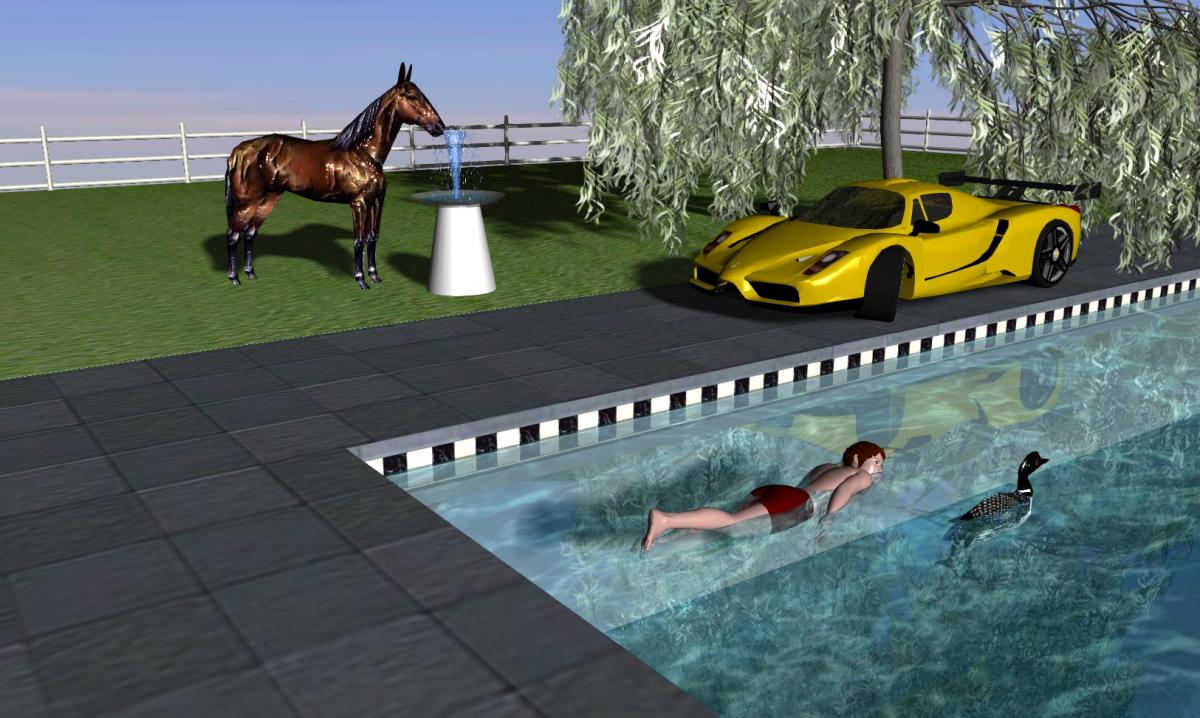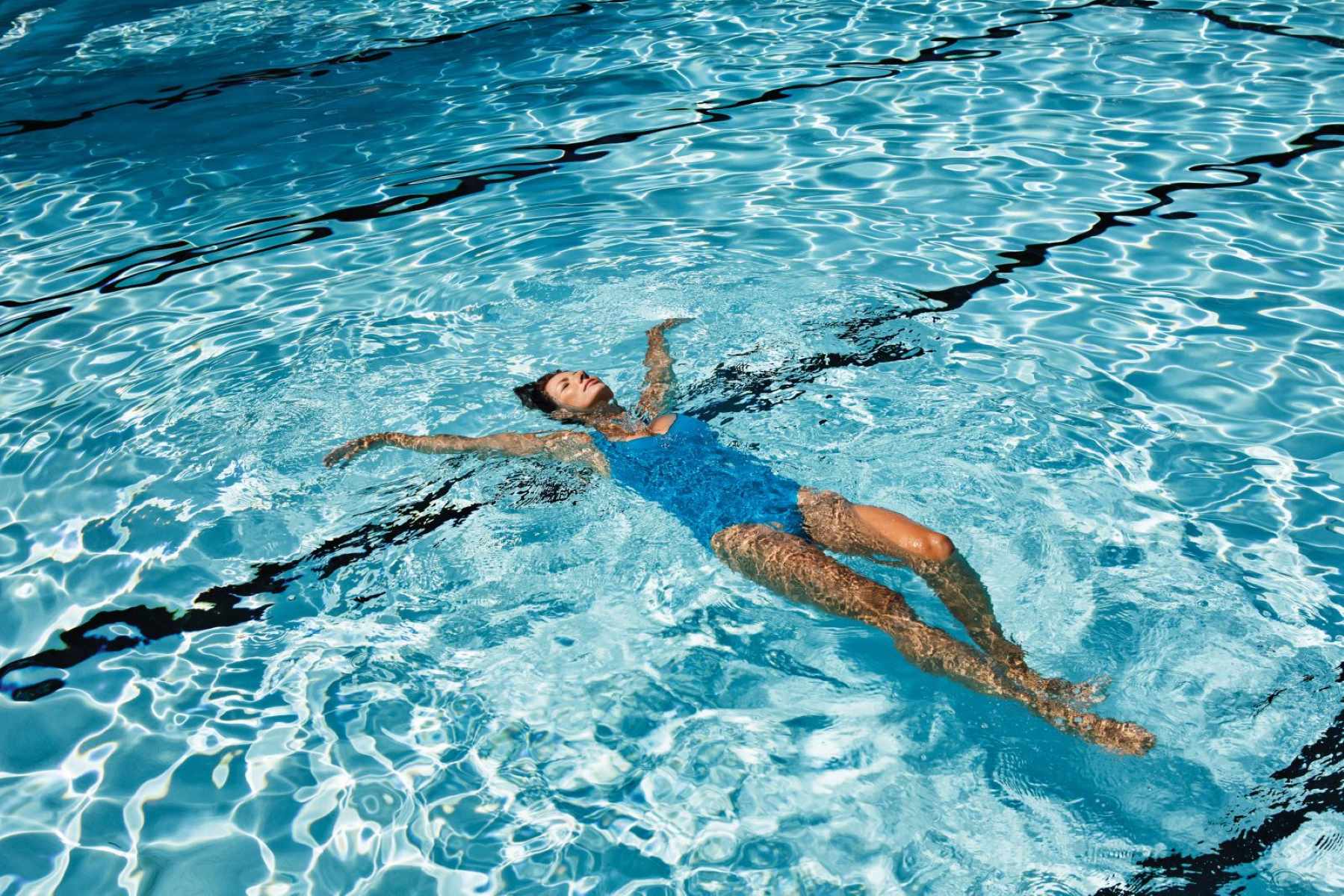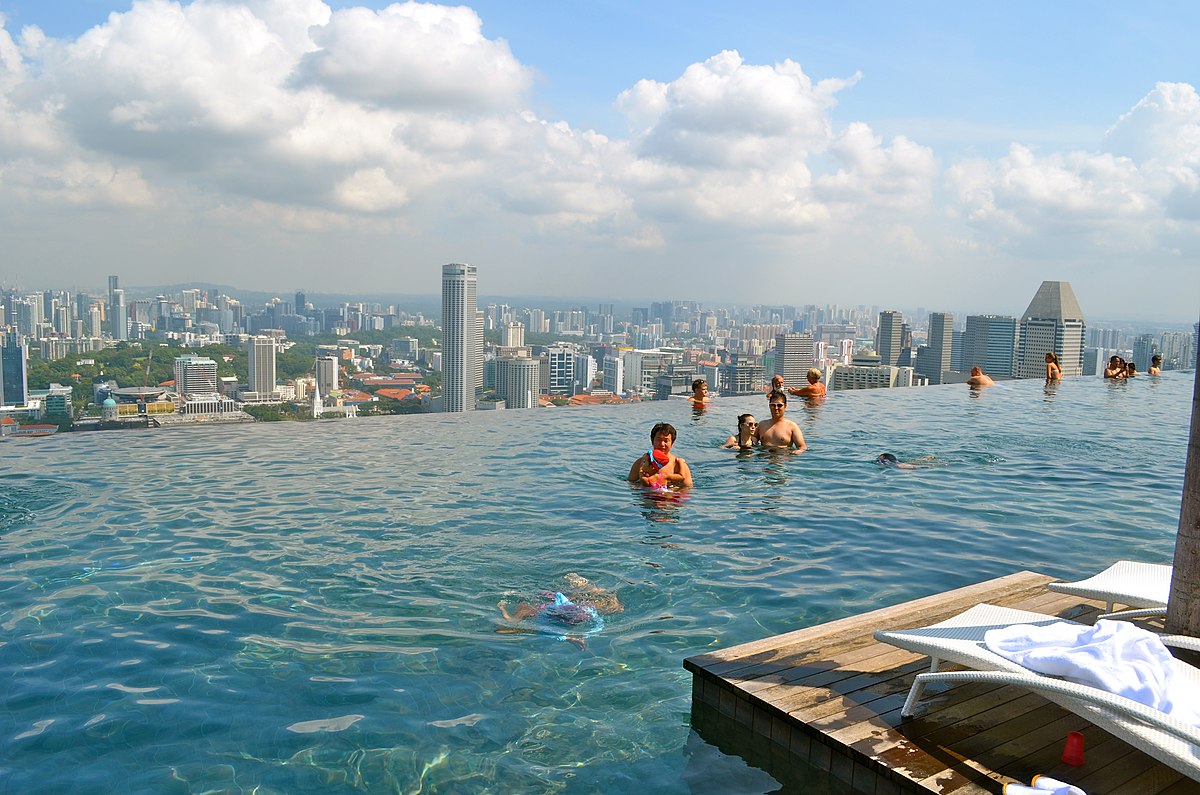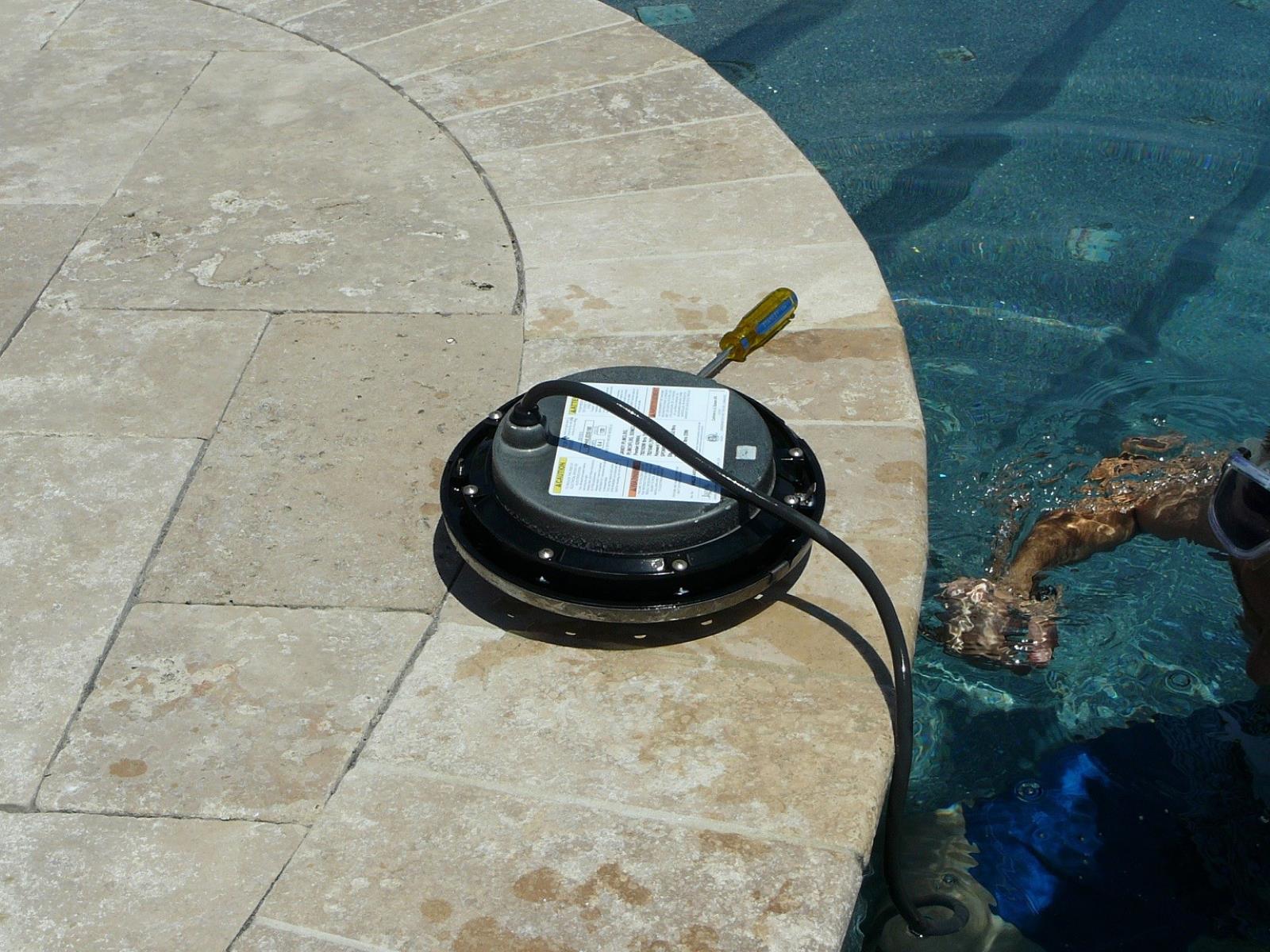Home>Gardening & Outdoor>Outdoor Recreation & Activities>How To Design A Swimming Pool


Outdoor Recreation & Activities
How To Design A Swimming Pool
Published: February 17, 2024
Learn how to design a stunning swimming pool for your outdoor recreation and activities. Get expert tips and ideas for creating the perfect pool space.
(Many of the links in this article redirect to a specific reviewed product. Your purchase of these products through affiliate links helps to generate commission for Storables.com, at no extra cost. Learn more)
Introduction
Designing a swimming pool is an exciting endeavor that offers the opportunity to create a refreshing oasis in your outdoor space. Whether you envision a serene, natural pool nestled among lush greenery or a sleek, modern pool with elegant features, the design process allows you to bring your vision to life. A well-designed swimming pool not only enhances the aesthetic appeal of your property but also provides a rejuvenating retreat for relaxation and recreation.
As you embark on the journey of designing a swimming pool, it's essential to approach the process with careful consideration and attention to detail. From determining the purpose and location of the pool to selecting the ideal features and ensuring safety measures, each step plays a crucial role in shaping the ultimate design. By following a systematic approach and integrating your personal preferences with practical considerations, you can create a bespoke swimming pool that aligns with your lifestyle and complements the surrounding environment.
Throughout this comprehensive guide, we will delve into the essential steps involved in designing a swimming pool, providing valuable insights and practical tips to guide you through the process. By exploring the various aspects of pool design, including the selection of pool type, size, features, and layout, you will gain a deeper understanding of the key factors that contribute to a successful pool design. Additionally, we will emphasize the importance of integrating safety measures and maintenance considerations into the design, ensuring that your pool not only looks stunning but also functions seamlessly for years to come.
Whether you are envisioning a family-friendly pool for leisurely gatherings or a sophisticated pool for hosting elegant soirees, the design process offers endless possibilities for customization. By embracing creativity, thoughtful planning, and a keen eye for detail, you can embark on a rewarding journey to design a swimming pool that reflects your unique style and enhances your outdoor living experience. So, let's dive into the intricacies of pool design and embark on an inspiring journey to create the perfect aquatic haven in your backyard.
Key Takeaways:
- Designing a swimming pool involves careful planning, from purpose and location to layout and safety. It’s a creative journey to create a personalized oasis that enhances outdoor living.
- Integrating water features, lighting, and accessories elevates a pool into a multifaceted space for relaxation and social gatherings. Thoughtful planning ensures a stunning and functional aquatic haven.
Read more: How To Cover A Swimming Pool
Step 1: Determine the Purpose and Location
The initial step in designing a swimming pool involves a thoughtful assessment of the intended purpose and the ideal location for the pool. Understanding the primary function of the pool is crucial, as it directly influences the design elements and overall layout. Whether you envision the pool as a serene retreat for relaxation, a focal point for entertaining guests, or a space for fitness and recreation, clarifying its purpose sets the foundation for the design process.
When determining the purpose of the pool, consider your lifestyle, preferences, and the activities you intend to enjoy in and around the pool. For instance, if you prioritize tranquility and seek a peaceful escape, a design that incorporates water features, such as gentle waterfalls or a tranquil fountain, may align with your vision. Conversely, if you anticipate hosting lively gatherings and social events, a design that includes ample seating areas, integrated lighting, and perhaps a poolside bar or outdoor kitchen can cater to your entertainment needs.
In addition to defining the purpose, selecting the optimal location for the pool is equally pivotal. Factors such as sunlight exposure, privacy, existing landscape features, and proximity to the main residence should be carefully evaluated. Assessing the natural topography of the site and considering the surrounding views can aid in determining the most advantageous placement for the pool. Furthermore, the location should facilitate seamless integration with other outdoor amenities, such as patios, decks, and landscaping elements, to create a cohesive and inviting outdoor environment.
By meticulously evaluating the purpose and pinpointing the ideal location, you can lay the groundwork for a well-conceived pool design that harmonizes with your lifestyle and maximizes the potential of your outdoor space. This deliberate approach ensures that the pool not only fulfills its intended function but also becomes an integral and aesthetically pleasing feature of your property. With the purpose and location clearly defined, you are poised to embark on the next phase of the design process, where you will delve into selecting the pool type, size, and other essential features that align with your vision and preferences.
Step 2: Choose the Pool Type and Size
Selecting the pool type and size is a pivotal stage in the design process, as it significantly influences the functionality, aesthetics, and overall appeal of the swimming pool. When deliberating on the pool type, various options are available, each offering distinct characteristics and design possibilities. Common pool types include inground pools, above-ground pools, lap pools, freeform pools, and infinity edge pools, among others. Each type presents unique advantages and considerations, catering to different preferences and spatial requirements.
Inground pools, known for their seamless integration with the surrounding landscape, are a popular choice for homeowners seeking a permanent and visually striking pool. Their versatility in design, encompassing various shapes, depths, and materials, allows for tailored customization to align with the desired aesthetic and functional attributes. On the other hand, above-ground pools offer a more cost-effective and flexible alternative, ideal for smaller spaces or temporary installations. Their ease of installation and portability make them an attractive option for homeowners seeking a practical yet enjoyable pool experience.
The size of the pool is another critical aspect that warrants careful consideration. The available space, intended use, and personal preferences play a significant role in determining the ideal dimensions of the pool. For those prioritizing fitness and swimming activities, a longer and narrower pool, commonly known as a lap pool, may be the preferred choice. Conversely, families or individuals seeking a versatile pool for leisure and recreation may opt for a larger, freeform design that accommodates various activities and relaxation areas.
Furthermore, the integration of additional features, such as spa areas, shallow lounging sections, or built-in seating, can influence the overall size and layout of the pool. These features contribute to the functionality and visual appeal of the pool, enhancing its recreational and aesthetic value. By carefully evaluating the available space and envisioning the desired pool activities, you can determine the optimal size that aligns with your lifestyle and complements the surrounding outdoor environment.
Ultimately, the selection of the pool type and size should harmonize with your vision, lifestyle, and the architectural style of your property. By aligning these considerations with practical and aesthetic preferences, you can embark on the next phase of the design process, where you will delve into the surrounding landscape and its integration with the pool design.
Step 3: Consider the Surrounding Landscape
The surrounding landscape plays a pivotal role in shaping the ambiance and visual impact of a swimming pool. When designing a pool, it is essential to carefully consider the existing natural elements, architectural features, and overall outdoor environment to create a harmonious and visually captivating setting.
One of the key aspects to evaluate is the existing vegetation and topography surrounding the pool area. Mature trees, shrubbery, and natural foliage not only contribute to the aesthetic appeal but also provide privacy, shade, and a sense of seclusion. By strategically integrating these elements into the pool design, you can create a serene and inviting atmosphere while preserving the natural beauty of the landscape.
Moreover, the topography of the site influences the layout and positioning of the pool. Sloping terrain can be leveraged to create multi-level pool designs, incorporating cascading water features or integrated spa areas. Embracing the natural contours of the land allows for a seamless integration of the pool with the surrounding environment, enhancing the overall visual impact and creating a captivating focal point in the landscape.
In addition to the natural elements, the architectural style of the property and existing outdoor structures should be taken into account. The pool design should complement the architectural aesthetics, whether it's a contemporary, minimalist residence or a traditional, Mediterranean-inspired estate. Harmonizing the pool design with the existing architectural elements ensures a cohesive and integrated outdoor living space.
Furthermore, the integration of hardscaping elements, such as stone pavers, decking materials, and outdoor furnishings, contributes to the overall landscape design. Selecting materials that resonate with the natural surroundings and complement the pool's aesthetic enhances the visual cohesiveness of the outdoor space.
By meticulously evaluating the surrounding landscape and its inherent features, you can craft a pool design that seamlessly integrates with the natural environment, enhances the visual appeal of the property, and creates a captivating outdoor oasis. This thoughtful approach ensures that the pool becomes an organic extension of the landscape, enriching the outdoor living experience and providing a tranquil retreat in perfect harmony with nature.
When designing a swimming pool, consider the size and shape that will best fit your space and needs. Also, think about the depth, location, and any additional features like a diving board or slide.
Step 4: Select the Pool Features and Accessories
The selection of pool features and accessories is a defining aspect of the pool design process, as it allows for personalization and customization to enhance both the functionality and visual allure of the swimming pool. By integrating carefully chosen features and accessories, you can elevate the pool from a mere water feature to a captivating and versatile outdoor retreat.
One of the primary considerations when selecting pool features is the incorporation of water elements, such as waterfalls, fountains, and cascading jets. These elements not only add a soothing auditory dimension to the pool environment but also contribute to a sense of tranquility and visual interest. Whether you opt for a natural, rock-encased waterfall or a contemporary, sleek fountain, the addition of water features infuses the pool area with a captivating ambiance.
Furthermore, the inclusion of lighting features is instrumental in extending the pool's functionality and aesthetic appeal into the evening hours. Underwater LED lights, strategically placed around the pool perimeter, create a mesmerizing visual effect, enhancing safety and ambiance. Additionally, accent lighting for landscaping elements, pathways, and architectural details can further elevate the overall allure of the pool area, transforming it into a captivating nighttime retreat.
The integration of accessories, such as poolside seating, umbrellas, and loungers, contributes to the comfort and convenience of the pool environment. Selecting durable and stylish furnishings that align with the overall design aesthetic ensures a cohesive and inviting outdoor space for relaxation and social gatherings. Moreover, the addition of built-in amenities, such as sun shelves, tanning ledges, and integrated spa features, enhances the versatility and recreational value of the pool, catering to a diverse range of preferences and activities.
Incorporating technological advancements, such as automated pool covers, heating systems, and water purification solutions, further enhances the functionality and ease of maintenance. These features not only streamline the operational aspects of the pool but also contribute to energy efficiency and sustainability, aligning with modern trends in pool design and environmental consciousness.
By thoughtfully selecting pool features and accessories that resonate with your lifestyle, preferences, and the overall design vision, you can create a bespoke and captivating pool environment that reflects your unique style and enhances the outdoor living experience. The integration of these elements transforms the pool into a multifaceted and inviting space, where relaxation, recreation, and social gatherings converge seamlessly, enriching the outdoor living experience for years to come.
Read more: How To Empty A Swimming Pool
Step 5: Design the Pool Layout and Shape
Designing the layout and shape of a swimming pool is a pivotal stage that encapsulates the fusion of aesthetics, functionality, and spatial harmony. The pool layout serves as the canvas upon which the entire pool environment is crafted, dictating the flow, visual appeal, and practicality of the space. When embarking on this phase of the design process, careful consideration of the available space, architectural elements, and intended pool activities is paramount.
The layout of the pool encompasses the arrangement of key features, such as entry points, seating areas, and circulation paths, to optimize usability and visual coherence. Whether you envision a linear, symmetrical pool design that exudes a sense of elegance and formality, or a freeform, organic layout that embraces natural curves and fluidity, the choice of layout profoundly influences the overall ambiance and functionality of the pool environment.
Moreover, the shape of the pool plays a defining role in shaping its visual impact and accommodating specific activities. Rectangular and geometric pool shapes convey a sense of classic sophistication and are well-suited for lap swimming and formal gatherings. Conversely, freeform and irregular shapes evoke a more natural and relaxed atmosphere, seamlessly integrating with the surrounding landscape and offering versatile spaces for leisure and recreation.
Incorporating design elements such as steps, benches, and integrated spa areas into the pool layout enhances usability and comfort, catering to diverse preferences and activities. Additionally, the strategic placement of these features contributes to the visual balance and focal points within the pool environment, creating a captivating and inviting space for relaxation and socializing.
The pool layout should also harmonize with the architectural style of the property, seamlessly integrating with the existing outdoor structures and landscape elements. By aligning the pool layout with the architectural aesthetics, a cohesive and integrated outdoor living space is achieved, where the pool becomes an organic extension of the property's design language.
By meticulously crafting the pool layout and shape to align with your vision, lifestyle, and the inherent characteristics of the outdoor space, you can create a captivating and functional pool environment that reflects your unique style and enhances the outdoor living experience. The thoughtful integration of layout and shape transforms the pool into a harmonious and inviting retreat, where form and function converge seamlessly, enriching the outdoor living experience for years to come.
Step 6: Plan for Safety and Maintenance
Ensuring the safety and maintenance of a swimming pool is paramount in preserving its functionality, longevity, and the well-being of its users. As an integral part of the pool design process, meticulous planning for safety measures and maintenance protocols is essential to create a secure and sustainable pool environment.
Safety considerations encompass various aspects, including the installation of pool barriers, such as fences and gates, to prevent unauthorized access and enhance child safety. Compliance with local regulations and building codes regarding pool enclosures is imperative to mitigate potential hazards and promote a secure pool environment. Additionally, the integration of pool covers, alarms, and safety signage further enhances the safety measures, providing added layers of protection and awareness.
Incorporating non-slip surfacing around the pool perimeter and on pool decks minimizes the risk of slips and falls, especially in wet conditions. Furthermore, ensuring proper lighting around the pool area and along pathways enhances visibility during evening hours, contributing to a safe and secure environment for pool users and guests.
Maintenance planning encompasses the implementation of routine cleaning, water quality management, and equipment upkeep to preserve the pool's pristine condition and operational efficiency. Establishing a regular maintenance schedule for tasks such as skimming, vacuuming, and chemical balancing is essential to uphold water clarity and hygiene. Additionally, inspecting and servicing pool equipment, including pumps, filters, and heaters, ensures optimal functionality and prolongs their lifespan.
Moreover, planning for seasonal maintenance, such as winterizing the pool in colder climates, safeguards the pool and its components from potential damage due to freezing temperatures. Adequate storage and protection of pool accessories, furniture, and equipment during off-peak seasons contribute to their longevity and minimize wear and tear.
Integrating eco-friendly and energy-efficient solutions, such as solar heating systems and LED lighting, aligns with sustainable practices and reduces the environmental impact of pool operation. Furthermore, promoting water conservation through the implementation of efficient filtration systems and responsible water usage contributes to environmental stewardship and operational cost savings.
By meticulously planning for safety measures and maintenance protocols, pool owners can create a secure, sustainable, and enjoyable pool environment that prioritizes the well-being of its users and the preservation of its infrastructure. This proactive approach not only fosters a sense of confidence and peace of mind but also ensures that the pool remains a source of relaxation, recreation, and enjoyment for years to come.
Conclusion
In conclusion, the process of designing a swimming pool is a multifaceted journey that intertwines creativity, practicality, and meticulous planning to create a captivating and functional outdoor oasis. By following the essential steps outlined in this comprehensive guide, individuals can embark on a rewarding and inspiring endeavor to craft a bespoke swimming pool that aligns with their unique vision, lifestyle, and the inherent characteristics of their outdoor space.
The deliberate assessment of the pool's purpose and location sets the foundation for a well-conceived design, ensuring that the pool seamlessly integrates with the surrounding environment and fulfills its intended function. The thoughtful selection of pool type and size, coupled with a keen consideration of the surrounding landscape, allows for the creation of a harmonious and visually captivating pool environment that enriches the outdoor living experience.
Furthermore, the meticulous integration of water features, lighting, and accessories elevates the pool from a mere water feature to a multifaceted and inviting space for relaxation, recreation, and social gatherings. The strategic design of the pool layout and shape, harmonized with safety measures and maintenance protocols, ensures that the pool not only looks stunning but also functions seamlessly and sustains its allure for years to come.
Ultimately, the culmination of the pool design process yields a personalized and captivating aquatic haven that reflects the individual's style, enhances the property's aesthetic appeal, and provides a tranquil retreat in perfect harmony with nature. By embracing creativity, thoughtful planning, and a holistic approach to design, individuals can transform their outdoor space into a captivating and functional haven that fosters relaxation, recreation, and cherished moments with family and friends.
In essence, the journey of designing a swimming pool transcends the mere creation of a water feature; it embodies the art of crafting an immersive and inviting outdoor environment that enriches the lives of those who experience it. With a blend of vision, practicality, and attention to detail, the process of designing a swimming pool becomes a transformative endeavor that yields a timeless and cherished addition to the outdoor living space.
Frequently Asked Questions about How To Design A Swimming Pool
Was this page helpful?
At Storables.com, we guarantee accurate and reliable information. Our content, validated by Expert Board Contributors, is crafted following stringent Editorial Policies. We're committed to providing you with well-researched, expert-backed insights for all your informational needs.















0 thoughts on “How To Design A Swimming Pool”